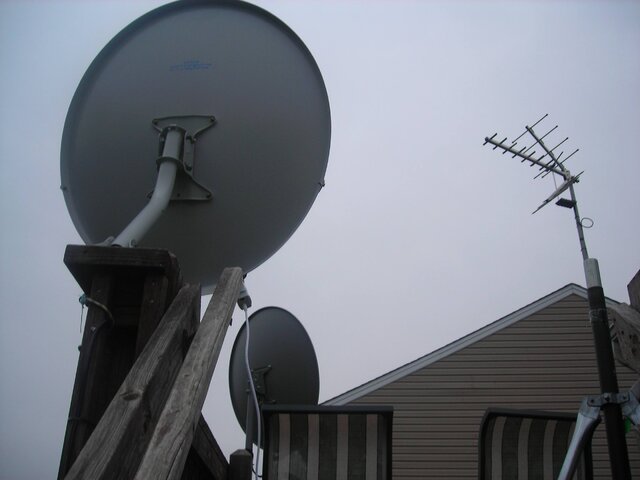Babadem,
Hi bud! I hope that I can help you with your set up. I have the very same dish and motor. GeoSat Pro 1.2 M and Power Tech DG-380.
Thanks to SatelliteAV and Sadoun!
Also, my location may help because my latitude and yours are actually quite close. You state that your latitude is 42.08 N and I am at 41.6 N, so this will aid because our readings will be fairly similar.
My longitude is way over west, but that won't matter until we get to the nearest true south satellite (I use 97.0 W and yours will be 72.0 W).
Let's hit on this while we are here as I can get a really good signal from 72.0W AMC 6. I get at least two TPs in consistently and these are:
11.891 GHz Horizontal. Symbol rate 1.666 MS/s (KFTL)
VPID: 4197 APID: 4198
12.053 GHz Vertical. Symbol rate 6.890 MS/s (NBC SAT MUX)
VPID: 120 APID: 110 CH 1
VPID: 220 APID: 210 CH 2
VPID: 320 APID: 310 CH 3
VPID: 420 APID: 410 CH 4
Now back to the mechanical setup. It is 17 degrees F outside and snowing, so I do not want to spend too much time out there this morning!

And my very first comment is: "Make sure that the mast is plumb!" I always have to state this, even if it seems tiresome and repetitious.
Attach the motor bracket to the mast and tighten the clamps equally from each nut. Don't overtighten them, they just need to be secure. Attach the motor to the clamp and snug the bolts, then check the sides of the motor clamp with a level to ensure that it is not malformed or bent. You want to transfer the plumbness of the mast to the clamp and thus, the motor.
Onto the motor. You can trust the raised pointer on the DG-380 motor housing for your latitude setting on the motor's scale. I have several DG-380's and several DG-280's and have checked them all against an inclinometer and they are all accurate.
If you want to double check your own motor with an inclinometer, you will want the dish and motor tube removed so that you can get the inclinometer slapped against the flat portion of the belly of the motor (lower half of the housing). The angle you will read on the inclinometer will be the elevation (or 90 degrees - the latitude).
For your location, set the motor latitude to 42 degrees (or the elevation via the inclinometer to 48 degrees). Snug all your bolts up, but don't crank on them, we're not building a tractor

.
Ensure that the motor tube is attached to the motor stem without any slop. The bolt has to be really secure. The DG-380 motor will have some natural gear backlash and it will auto-adjust for that.
Attach the dish bracket to the motor tube and ensure that you align the vertical axis of the bracket with the vertical axis of the motor tube. On the GeoSat Pro dish bracket, there is a small window in the back that you can look through and see the seam of the motor tube. Center the seam in that window. That should be sufficient.
Did you notice that there are holes for a third U-Bolt in the dish bracket? Did you only receive two U-Bolts? You might be very happy if you get a third U-Bolt and install it now. It will prevent the bracket from turning on the motor tube if a bad wind catches the dish later.
Since we are installing the GeoSat Pro dish on a downward pointing motor tube, our dish elevation angles are inverted. Follow the GeoSatPro dish manual for how to set this.
However, since you and I have nearly the same latitude position, we can compare our final results to assure that we did it right. We won't be exactly the same, but we will be really close.
When I look at my dish elevation pointer/scale, I see that it is reading approximately 23.75 degrees. What is yours reading? You should be somewhere near this.
RADAR


